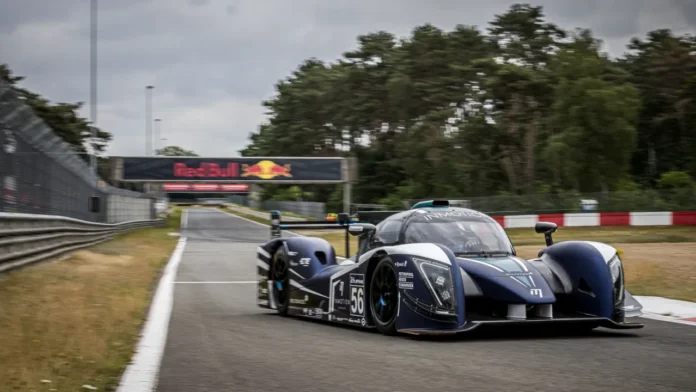It reached 225 kilometres per hour at Circuit Zandvoort and, according to the models, the car should even reach 300 kilometres per hour. That is the new race car of InMotion, a TU/e student team.
But the speed at which the electric racing car drives is not even the most special aspect of the car. That is, namely, its recharging time: the car can fully recharge itself in twelve minutes, twice as fast as a Tesla Model 3. “As far as we know, this is the only electric car for long-distance racing that can do that”, the TU/e said.
Degradation
The secret lies in the cooling of the battery pack, explains team manager Ewout Timmermans. “When charging a battery, heat is released. You can feel that, for example, when you charge a telephone; it gets warm. In the case of a telephone, you’re talking about a small battery cell, but during rapid charging of a battery pack with hundreds of cells close together, at least a thousand times more heat is released. The battery cells can’t cope with that; above 45 degrees they degrade. Then the capacity of the battery decreases”.
The student team developed a cooling method in which cooling plates are placed between the modules of cells, removing heat, and allowing the battery to charge faster. “In fact, we are now refining the technique by cooling at the cell level, which allows us to charge within minutes”, he says. “Since there are about 360 cells in a battery pack, that’s quite a challenge”, Timmermans says.
Refueling
While the super-fast rechargeable race car is a great achievement, the student team also has other goals it wants to achieve. InMotion says it wants to use the race car to challenge the automotive industry so that charging becomes more comparable to a refueling while also greatly reducing the charging time for electric trucks or airplanes.
“In a race you expose the car and battery pack to the most extreme conditions. If it is possible to reduce charging time on a track during a long-distance race, it must surely be possible on the road”.
Le Mans
And the ultimate goal for the racing car? InMotion has plenty of ideas about that too. The students want to compete with the car in the world-famous Le Mans 24 Hours race. However, there are still some steps to be taken. “Developing a race car does not yet mean that you have the knowledge to race it as a team, which is why we first want to complete a 1-hour race, and then build on from there. Hopefully we will then one day be at the start of that iconic race”, Timmermans said.
Source: Studio040
Translated by: Bob















